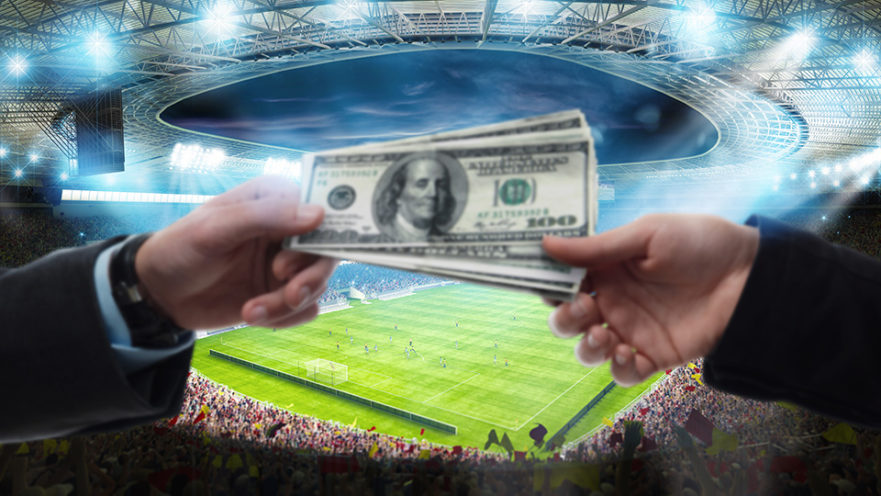After decades of debate and controversy, the legal and regulatory realm of college athletics has now experienced a major shift regarding compensation for student-athletes. This shift has left many wondering exactly what this means for the future of college athletics. In June of 2021, the Supreme Court ruled on this longstanding issue in the case of National Collegiate Athletic Association V. Alston Et Al. In its opinion, the Court addressed the extensive history of this issue and provided insight for the likely future direction.
History of College Athletics as told by the Supreme Court
To open its opinion, the Supreme Court dove into the history of college athletics. The Court recognized the first intercollegiate competition as a boat race between Harvard and Yale and highlighted that the race was sponsored by a railroad executive. The winners were offered an all-expense paid vacation with “lavish prices.”1 This was only the beginning of excitement and investment in intercollegiate athletics. Increased interest resulted in more competition, and college athletics initially operated under very minimal restrictions. The Court recounted many examples of athletes receiving extensive benefits to play. In fact, there were even “tramp athletes”1 that would “roam”1 from team to team depending on which team presented the most immediate and profitable offer.
This lack of regulation, in part, led President Theodore Roosevelt to call a meeting between Harvard, Princeton, and Yale, which effectively led to the creation of the National Collegiate Athletic Association (or as more commonly referred to as the “NCAA”). The NCAA is a nonprofit organization that regulates student athletes. As the Court noted, the resolutions from this initial meeting and the creation of the NCAA failed to provide any real solution. The Court presented stories of athletes going on strike due to the pay difference between upper and lower classmen and of one football player who took a pay cut to play professional football. According to an investigation from 1929, college football was so commercialized and professional that it was “not a student’s game.”1
Eventually, in 1948, the NCAA enacted the “Sanity Code” to establish rules addressing “pay to play,” and to provided means to enforce them. Since this first successful effort to regulate student-athlete compensation in college sports, NCAA policies have slowly evolved to provide more benefits to student athletes. As an example, the Court highlighted the expansion to provide for a student’s room and board and cash for incidental expenses, as well as the “Student Assistance Fund” and “Academic Enhancement Fund” created for student-athletes.
Still, even with the inclusion of these benefits, the debate over whether student athletes should be further compensation only increased. The NCAA and its supporters retained the same underlying premises: that student athletes are students first and foremost and that any benefits given should be in furtherance thereof. The position of the student athlete has not been to deny that they are students first, but to address they should be able to share in the millions of dollars their universities receive as a result of college athletics.
National Collegiate Athletic Association V. Alston Et Al., New Laws, and New Policies
In National Collegiate Athletic Association V. Alston Et Al., current and former student-athletes brought an action against the NCAA alleging that the restrictions on compensation violate anti-trust laws. Ultimately, the United States Supreme Court issued a narrow ruling in favor of the student-athletes. The Court upheld the injunction initially created by the District Court against restraints on “education-related benefits —such as those limiting scholarships for graduate school, payments for tutoring, and the like.”1 The Court addressed the NCAA’s concerns, stating that “nothing stops it from enforcing a ‘no Lamborghini’ rule – i.e., the NCAA may still limit what colleges offer the athletes.1 The District Court also stated that the NCAA could “specify and later enforce rules delineating which benefits it considers legitimately related to education.”1
The underlying idea found in the Supreme Court ruling has already been reflected in recent state laws, as several states have enacted laws affording athletes the opportunity to participate in endorsement deals, as well as to monetize their social media platforms. In 2021, it was reported that some student athletes had received endorsements reported to be in excess of $1,000,000.00 The NCAA has also announced its adoption of a “uniform interim policy suspending NCAA name, image and likeness rules for all incoming and current student-athletes in all sports.”2
It is unclear as to exactly what the new policies, laws, and rulings mean for college sports. However, it is evident that student-athlete compensation is rapidly evolving. With the floodgates having now opened for student athlete endorsements, there are sure to be many more legal issues and aspects to address both in the near and distant future.
For information on this topic and others, please visit our website: https://www.fidelislawfirm.com or call 615-370-3010.
1. Nat’l Collegiate Athletic Ass’n v. Alston, No. 20-512 (June 21, 2021).
2. Hosick, Michelle Brutlag. (2021, June 30). NCAA adopts interim name, image and likeness policy. https://www.ncaa.org/about/resources/media-center/news/ncaa-adopts-interim-name-image-and-likeness-policy

